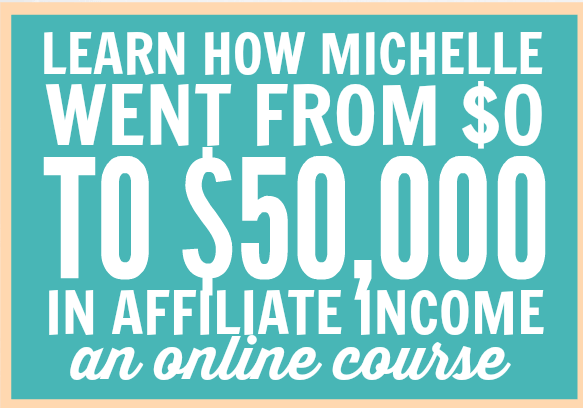We’re in the midst of the COVID-19 pandemic right now. Many of us are under stay-at-home orders…and life is just strange when you’re home 24/7.
There are countless memes online right now joking about how the “freshman 15” has become the “quarantine 15”.
*Disclosure: This post may contain affiliate links. Read our full disclosure policy here.
It sounds funny and I’ve laughed at these myself, but it’s actually a serious issue. The truth is that many people ARE going to gain weight during this epidemic.
You may think you have more important things to worry about right now than your weight, but your health is important and maintaining a healthy weight is a crucial component in staying healthy. In fact, a BMI of 40 or higher increases your risk of becoming seriously ill with the Coronavirus (or developing a number of other serious health conditions).
Many Americans are feeling bored, anxious, and worried. We’re stuck at home, so we can’t avoid these emotions by keeping ourselves busy like we normally do.
Instead, we might eat our feelings and snack all day long on the processed food we’ve been hoarding. Add in a lack of exercise and you have a recipe for weight gain.
So…what do we do in unprecedented times like these? How do you prevent weight gain when the gym is closed, your sports league is canceled, and you’re stuck at home 24/7 surrounded by tempting processed snacks?
Here are five effective tips for losing (or maintaining) weight when you’re stuck at home.
I followed the tips below to lose 35 pounds a few years ago, so I know this stuff works!
Identify the Trigger
When we try to lose weight, we focus too much on what we need to do. We try different diets (Paleo, vegan, Whole 30, etc.) and consider different ways to work out (cardio, strength training, group exercise classes, running, walking, 1:1 personal training).
We put all of our energy into the how. After trying numerous different diets and workout routines, we often feel discouraged because it seems like “nothing is working”.
This is because our approach is completely wrong.
We need to think about why we’re overweight in the first place. We weigh more than we want to because we’re consuming more calories than we’re burning. Why are consuming so many calories? Why do we overeat?
For most of us, the reason why we overeat is because we’re trying to escape from an unpleasant emotion. Anxiety, worry, frustration, boredom, loneliness…
The next time you feel tempted to overeat or to eat when you aren’t hungry, ask yourself what emotion you’re feeling. Are you bored? Stressed? Sad?
Our brains are wired to avoid pain – this is a good thing because it keeps us alive. A fear of pain keeps us from doing dangerous things, like touching a hot stove, approaching a bear, or jumping off a cliff.
The problem is that our brains do not understand the difference between physical pain and emotional pain.
Our natural instinct is to avoid emotional pain. We do this by engaging in behaviors (eating, drinking alcohol, gambling, spending money, scrolling through social media) that give us a dopamine hit (which improves our mood briefly, but it doesn’t last). Brooke Castillo calls these behaviors “buffering”.
The key to overcoming buffering (and overeating) is to accept your negative emotions. This is not easy to do because it goes against what our brains are naturally inclined to do. When you’re tempted to overeat, ask yourself what emotion you’re feeling. Name it.
For example, say to yourself “I’m feeling bored” or “I’m feeling anxious”. Next, allow the emotion to be there. Notice how it feels in your body. Describe it. For anxiety, you may say it feels like a knot in your stomach, a band pressing on your head, or a tightness in your chest.
Notice that this emotion is harmless. It is simply an uncomfortable vibration in your body. It will not hurt you. You can make space for it, accept it, and allow it to be there. When we resist emotions, we strengthen them. In contrast, when you accept an emotion, you’ll likely notice that it fades away more quickly than you had expected it would.
The process of accepting negative emotion is not a one-time thing. It’s a process that’ll take time to learn and you’ll need to practice. If you can master accepting uncomfortable emotions, you can stop overeating.
*Side note: We’re focused on food here, but you can use the techniques described in this blog post to overcome other types of buffering that you struggle with – such as overdrinking, overspending, or an addiction to social media.
Start an Urge Jar
As you work to overcome your tendency to use food to escape from your emotions, you’ll still experience urges to overeat. When you feel an urge, don’t give in to it…but don’t resist it either.
Resisting it sounds like this: “Don’t eat that. You can’t have that. You’re fat. You’d better not eat that. What’s wrong with you? Why can’t you control yourself?” These types of thoughts don’t serve you.
Instead, say to yourself “I have an urge to overeat right now. I’m not going to eat right now and I’m just going to allow that urge to be there. This is uncomfortable, but that’s okay.”
The more you do this, the easier it’ll be to accept urges without giving in to them.
Brooke Castillo recommends starting an “urge jar”. You could use a mason jar (or something similar). Every time you have an urge to overeat, put a glass bead in the jar. This is satisfying because it helps you to track your progress.
Even if you aren’t losing weight yet or even if you feel like you’re still giving in to urges more than you’d like, looking at your urge jar will give you a visual aid to remind you that you’re doing an awesome job! This will help to keep you motivated.
Eat 2:2
Many of us who overeat are unwilling to feel uncomfortable, so we eat the minute we feel the slightest bit hungry. The result of this is that we snack all day long and we eat much more than our bodies actually require for fuel…and we’re overweight.
We have a misconception that we need to eat a lot more than we actually do. Brooke Castillo recommends eating “2:2”. Here’s what she suggests:
- Allow yourself to go hours without food and pay attention to how you feel. Notice that hunger comes in waves. It develops slowly.
- As you develop more awareness, learn to identify how hungry you feel. On a scale of -10 to 10, -10 would be starving and 10 would be as full as you can imagine. Zero is neutral – not hungry nor full.
- Only eat when you are at a -2. If you’re at a zero or a -1, don’t eat yet. Wait until your hunger reaches -2.
- Eat until you are at a 2. Don’t stop when you’re simply at “neutral”. Keep eating until you are full but don’t go overboard. You don’t need to be bloated and feeling sick.
This sounds really simple to someone who doesn’t struggle with food, but it’s life changing if you, like me, use food to buffer.
Buy Healthy Foods
If you’re surrounded by junk, you’re going to eat junk. If your cupboards are filled with whole foods and healthy snacks, you’ll eat healthy food. It sounds obvious, but it’s tempting to buy junk food if we shop when we’re hungry!
One silver lining with the current situation is that you’re unlikely to be tempted by vending machines at work, delicious restaurant desserts, or fast food. You’re stuck at home, so the only thing that’s going to tempt you is whatever is in your fridge. Keep it stocked with healthy, natural food.
Create an Exercise Routine
It’s easy to let go of your exercise routine right now. Your gym is closed and maybe you can’t even go for a walk or run outside due to the weather (we’re in the middle of a snowstorm in the Midwest as I type this!)…so what do you do?
Here are some at home workout ideas (or, rather, work in!):
- Watch an exercise DVD.
- Watch fitness videos on YouTube.
- Do a full body workout that doesn’t require any equipment (think squats, lunges, crunches, etc.).
Whatever you decide to do, be consistent. Make a specific plan. Maybe you’re going to do yoga 3x per week for one hour or perhaps you’re going to do 30 minutes of cardio every other day.
Even though you’re at home, honor your commitment to yourself and “show up”…just as you would if you had agreed to meet a friend at the gym.
You can do this!
It’ll look a little different than it did before, but that’s okay.




Recent Comments